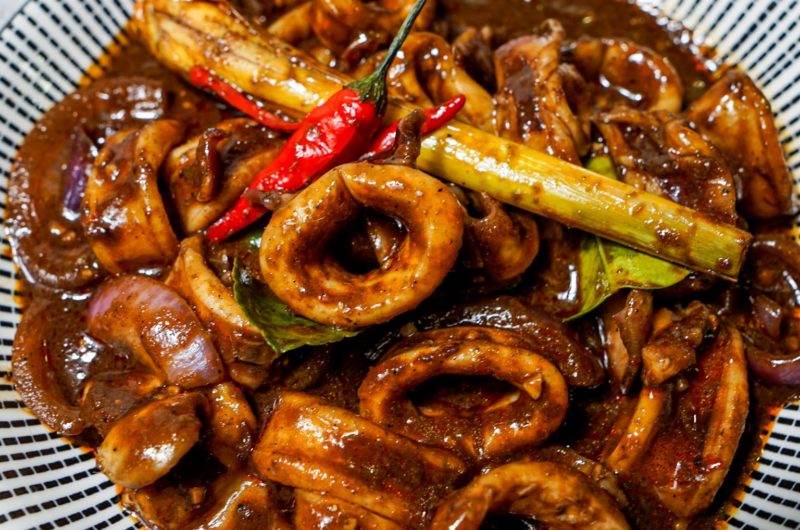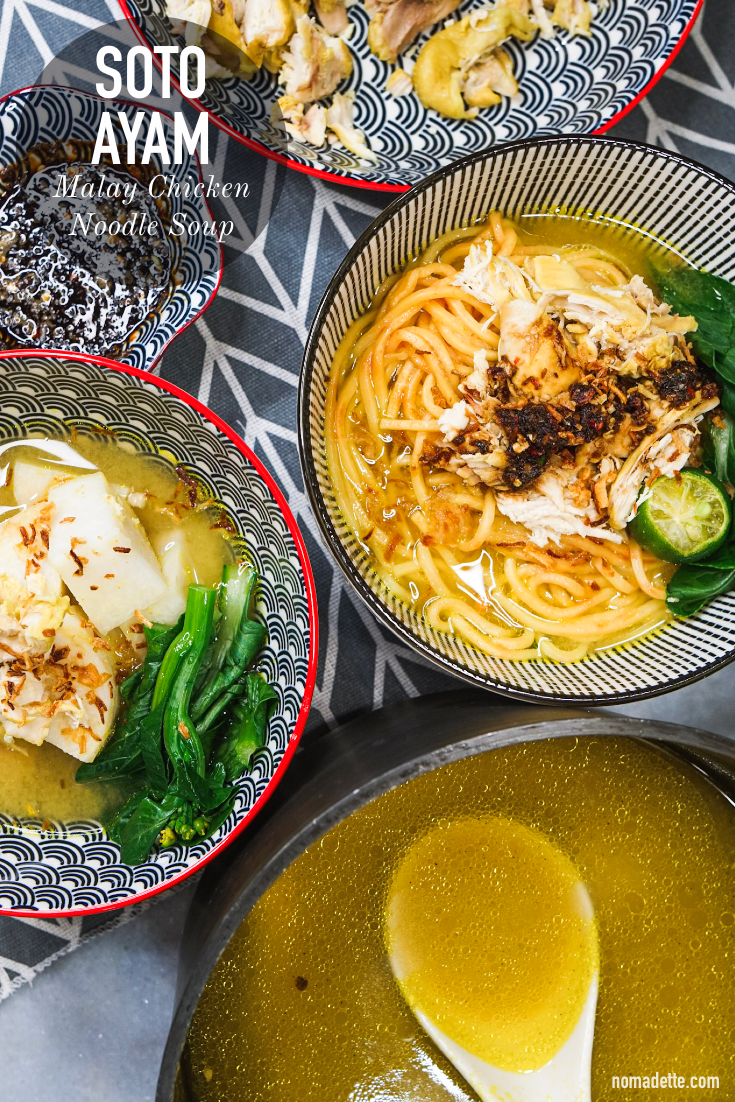Elevate your culinary adventures with this EASY Sotong Masak Hitam or Squid Ink Stew recipe. Embrace the rich blend of squid, spices, and umami squid ink – a guaranteed journey for your taste buds!
Sotong Masak Hitam, or Malaysian Squid Ink Stew/Spicy Blackened Squid, is a Malay dish that uses the black ink of squids. Sotong Masak Hitam is a delicious Singapore Malay/Malaysian dish featuring squid cooked in a flavourful black sauce. “Sotong” is the Malay word for squid, and “Masak Hitam” translates to “cooked black.”
If you’re wondering what squid ink tastes like, it’s a savoury, deep umami flavour. Typically, the dish is seasoned with a blend of spices, garlic, ginger, and sometimes dried chili paste for some heat. When squid ink pasta became a trendy thing a couple years back, I tried it and went “hmm, something’s missing from this”… That “missing” taste is just spiciness! My palate was more used to my Mom’s spicy Sotong Masak Hitam – and if you haven’t tried squid ink with that punch of spice, you need to!
The Spice Paste / Rempah for Sotong Masak Hitam
In this recipe, I used ready-made dried chilli paste. If I were to make the dried chilli paste from scratch, I would blend the ginger, garlic and onions along with the dried chillies, resulting in a smoother gravy. To make your own easy dried chilli paste, see this recipe. You can also make a versatile sambal, and use that in place of dried chilli paste – bonus, no need to cook down the dried chilli paste to ‘pecah minyak’!
Depending on how much dried chillies you used, or the depth of colour, don’t be alarmed if your Sotong Masak Hitam did not come out completely black. This will also depend on how much ink you’ve managed to extract. Some squids might come with the ink sacs already broken as well.
Mine, for example tends to be a dark brown shade – this is because I use a lot of dried chilli paste. I love a good spice kick to my Sotong Masak Hitam!
What if you do not take spice at all? Remove the dried chilli paste! This dish can be made without the dried chilli paste and it will still be ultra delicious. In fact, if you make double of the sauce for this, toss some pasta through, and that’s Squid Ink Pasta!
How to Extract the Squid Ink Sacs
Squid ink is a dark blue-black liquid produced by squids. The main component is melanin, which gives it that dark inky shade. It is also delicious! It gives a deep, umami, flavour. It’s prevalent in Japanese, Italian and Mediterannean cuisines. Extracting the Squid ink sacs is extremely easy.


Detach it from the squid by cutting off the entire portion with a knife. Careful to not puncture the ink sac.

Before cooking, cut the sacs open. You can just use a pair of scissors to puncture and cut into them to release the ink.
A mildly disturbing fact, you can actually extract more squid ink from the eyes of the squid. With a knife or scissors, cut an incision at the eye area, and more squid ink should come out.

To see this in detail, make sure you watch the YouTube video! If you are using squid for any other dishes, keep the ink sacs and store in the freezer. The next time you are making Sotong Masak Hitam, you can whip this out and add to your dish.
How to Prep the Squid
With the rest of the squid, remove the head and tentacles. You can use this in the dish as well, although I do not since the squid tentacles are too tiny to make much of a difference.
Remove the clear bone within. Cut the squid into calamari rings. Give the squids a rinse under water to thoroughly clean the insides. I prefer to wash the squid once I cut them up, as its a lot easier to clean it.
Gravy Consistency
My Sotong Masak Hitam has a thicker gravy. Some Sotong Masak Hitams will have a thinner, sort of watery consistency. If this is what you prefer, simply add more water.
How to Serve Sotong Masak Hitam
Sotong Masak Hitam is best served with hot rice.
Have some leftover Sotong Masak Hitam? Boil pasta and toss through the sauce for delicious Squid Ink Pasta!
More recipes like this:
If you like more Malay home-cooked dishes, try any of these recipes next:









